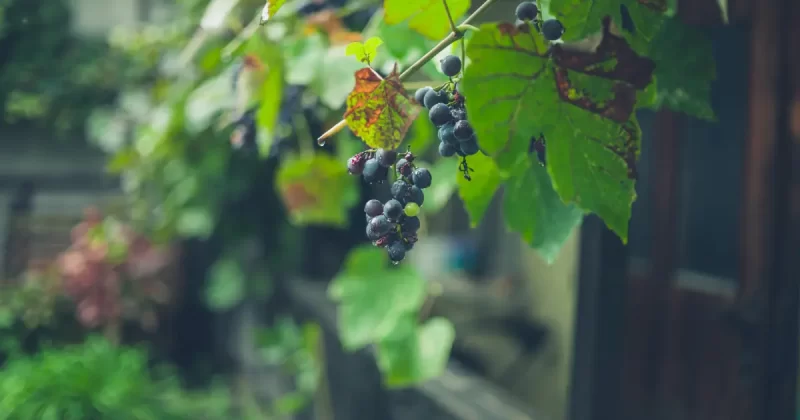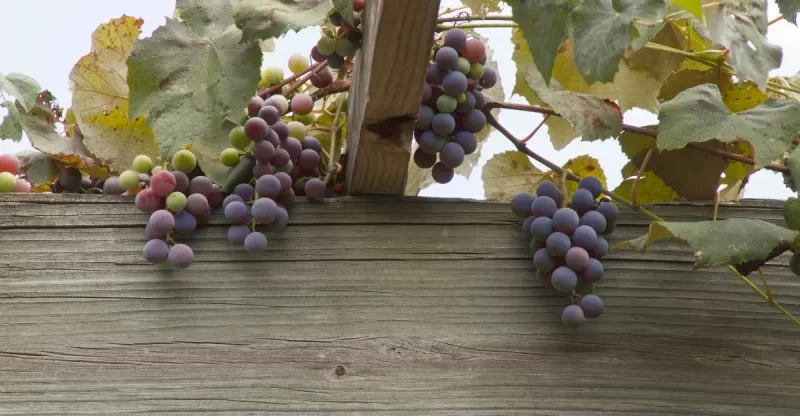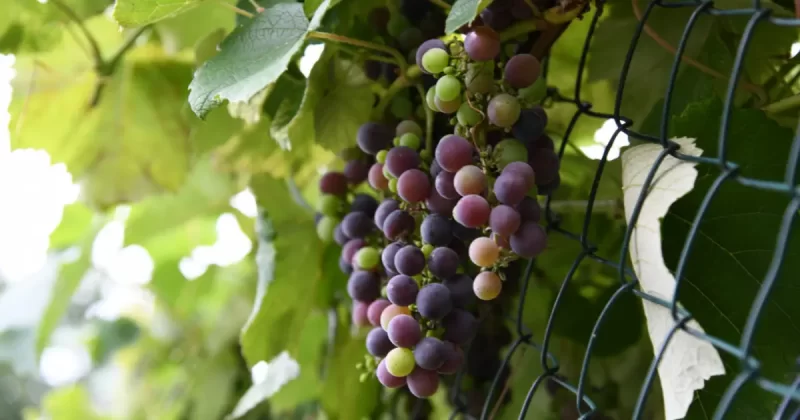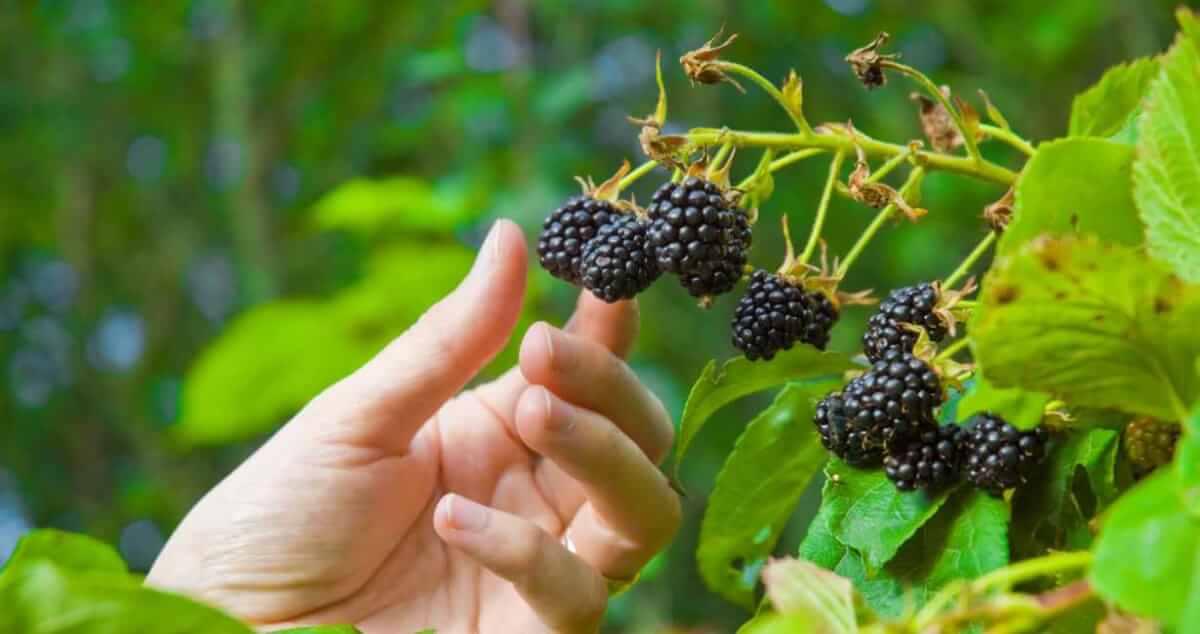
There’s a certain magic to growing grapes—perhaps it’s the sun-soaked Mediterranean feel or the allure of your own private vineyard.
As a North Texas gardener, you might be wondering, Can I really grow grapes here? The answer is, actually, yes! With the right varieties and a little planning, you can have a backyard grapevine that produces juicy fruit year after year.
I still remember the first time I planted grapes. I’d seen them growing wild along fences in rural Texas, twisting their way up old barns, and I thought, If they can survive out there, surely I can grow them in my yard. But as with all gardening adventures, there were definitely lessons to learn along the way.
So let’s get into it: how to grow grapes in your North Texas garden, which varieties work best, and how to care for them to get the best harvest.

Choosing the Right Grape Varieties
Not all grapes thrive in Texas heat and humidity, so choosing the right variety is half the battle. Some grapes struggle with the diseases that come with our warm, sometimes wet climate.
Here are the best options for North Texas:
Bunch Grapes
- Champanel – This variety was practically made for Texas. It handles heat, drought, and clay soil like a champ. The grapes have a strong, old-fashioned flavor, great for juice or fresh eating.
- Black Spanish (Lenoir) – A disease-resistant, tough-as-nails grape with deep red juice, perfect for making wine or jelly.
- Blanc du Bois – If you’re into making white wine, this grape is an excellent choice. It’s resistant to Pierce’s disease (a bacterial infection that can wipe out grapevines in the South).
- Victoria Red – A relatively new variety with large, sweet grapes that work well for fresh eating.
- Concord – Yes, you can grow the classic jelly grape here, but be prepared for a little extra disease management in humid years. I had a neighbor that grew Concords and made them into jelly.
Muscadine Grapes for East Texas
Muscadine Grapes
Muscadines, native to East Texas, are the toughest, most disease-resistant grapes, thriving in acidic soil (pH 5.5–6.5). They tolerate heat, humidity, and pests better than bunch grapes and have a rich, unique flavor. A standout variety, “Southern Home”, is clay-tolerant, drought-resistant, and doubles as an ornamental vine with striking, maple-like leaves.

Where and How to Plant Grapes
Grapes are one of those crops that reward a little extra effort up front. If you plant tem in the right spot with a strong support system, you’ll save yourself a lot of trouble later.
1. Location, Location, Location
Grapes need full sun—at least 6 to 8 hours per day. The best spot is on a gentle slope or a raised area where air can circulate well. If you plant them in a low spot, they’ll be more prone to fungal diseases due to lingering humidity.
2. Timing
Plant grapes late winter or early spring. A fall planting can also be a good way to get a head start and allow vines to establish roots through winter.
3. Soil Prep
Much of North Texas has heavy clay soil, so good drainage is key. If your soil is dense, consider amending ground soil with good compost and expanded shale or planting your vines in a raised bed.
4. Spacing & Trellising
- Space grapevines 6 to 8 feet apart.
- Use a strong trellis system—grapevines are vigorous growers, and a flimsy setup will collapse under their weight. The most common system is a single wire trellis at about 5 feet high or a two-wire system at 3 and 5 feet.
- You can also grow grapes along fences, arbors, or other vertical support structures.
Caring for Your Grapevines
This is where things can get a little tricky if you’re new to grapes, but don’t worry—I’ve made all the mistakes so you don’t have to.
1.
Grapes need deep
Instead of frequent, shallow
2. Fertilizing
Grapes don’t need much fertilization. Too much nitrogen will make them grow like crazy but produce little fruit. In early spring, top dress with compost or rake in a slow release organic
3. Pruning (The Part Everyone Messes Up!)
Pruning is the secret to getting good grapes. Without it, vines turn into a tangled mess that produces little fruit.
- In the first year, focus on training the vine up its trellis and removing side shoots.
- In late winter (February in North Texas), cut back about 90% of the previous year’s growth. I know—it sounds drastic, but grapes only produce fruit on new wood.
- Stick to a spur pruning or cane pruning system, depending on the variety you’re growing.

Common Grape Growing Problems & How to Fix Them
Even with the best care, you’ll probably run into a few challenges. Here’s how to handle the most common ones:
- Pierce’s Disease – This bacterial infection is spread by insects and can kill vines. The best defense is choosing resistant varieties like Black Spanish and Blanc du Bois.
- Black Rot – Fungal spots that turn grapes into shriveled raisins before they ripen. Prevent it with good air circulation and an early-season
fungicide spray if needed. - Birds & Squirrels – These guys will love your grapes as much as you do. Netting your vines before the grapes ripen is the best way to keep them from stealing your harvest.
Harvesting & Enjoying Your Grapes
The moment of truth—when you finally get to taste the fruits of your labor! Grapes in North Texas usually ripen late June through August, depending on the variety.
To know when they’re ready:
- They should be fully colored (not all grapes turn purple—some stay green).
- Taste them! Grapes don’t continue to ripen once picked, so they need to be sweet on the vine.
- The stems should start to turn brown instead of green.
And once you’ve harvested? The possibilities are endless—fresh eating, jelly-making, juice, wine (or at least a very enthusiastic attempt at wine).
Final Thoughts
Growing grapes in North Texas is an adventure, but one that pays off in the long run. They take a little patience and care, but once established, a well-tended grapevine will keep producing for decades.
If you’ve been on the fence about planting grapes, take this as your sign to go for it. One day, you’ll be standing in your backyard with a bowl of sun-warmed, homegrown grapes, wondering why you didn’t do it sooner.
Want more Texas gardening tips? Join my email list for expert advice tailored to North Texas growers! 🚜🌿
- Can Eating Tomatoes Help Prevent Weight Gain? New Study Says Yes - May 25, 2025
- New to Gardening? Join Our Step-by-Step Beginner Gardening Class - April 24, 2025
- Why “Intensive” Gardening is Not Good - March 9, 2025

